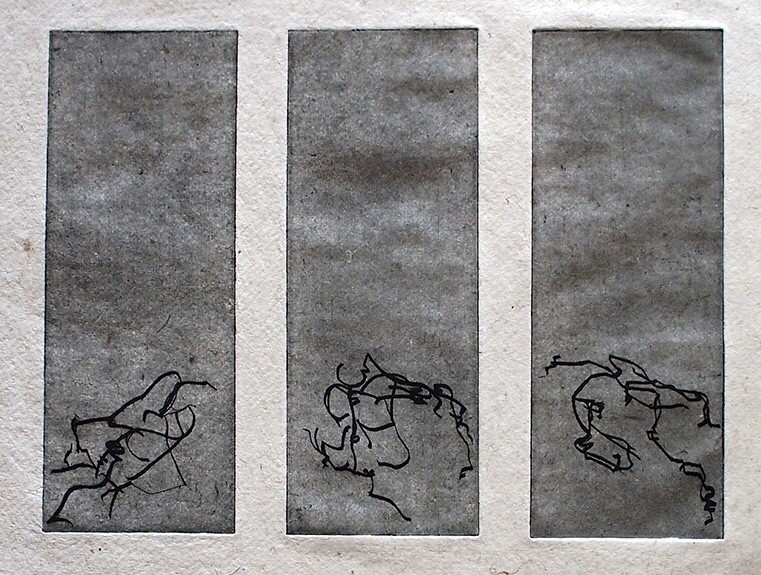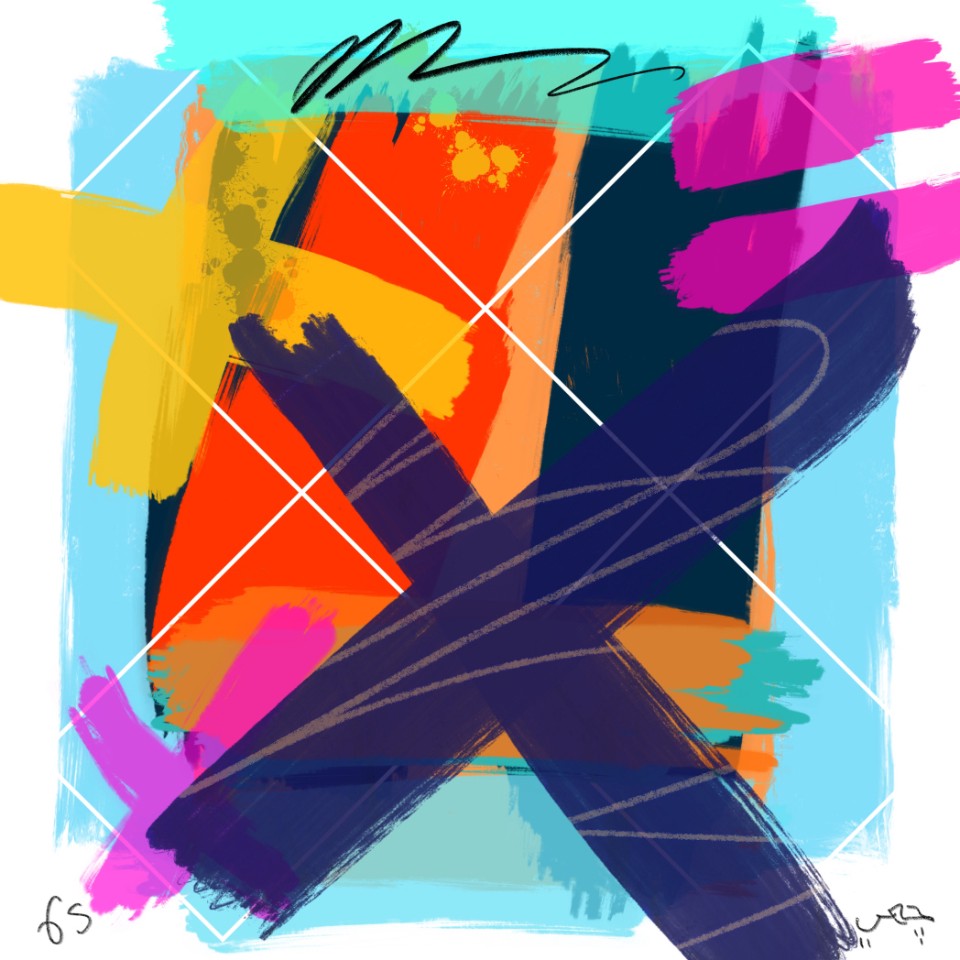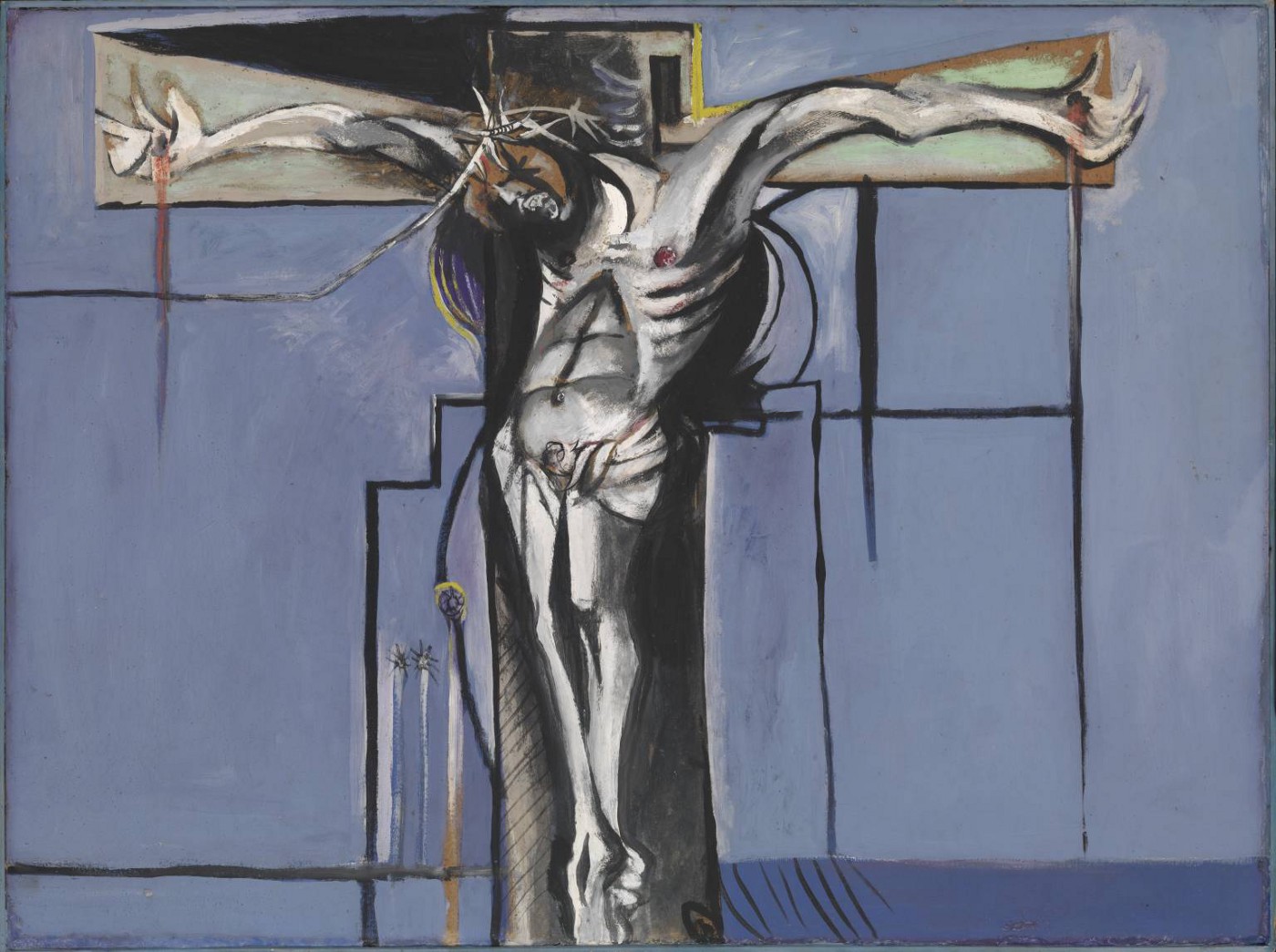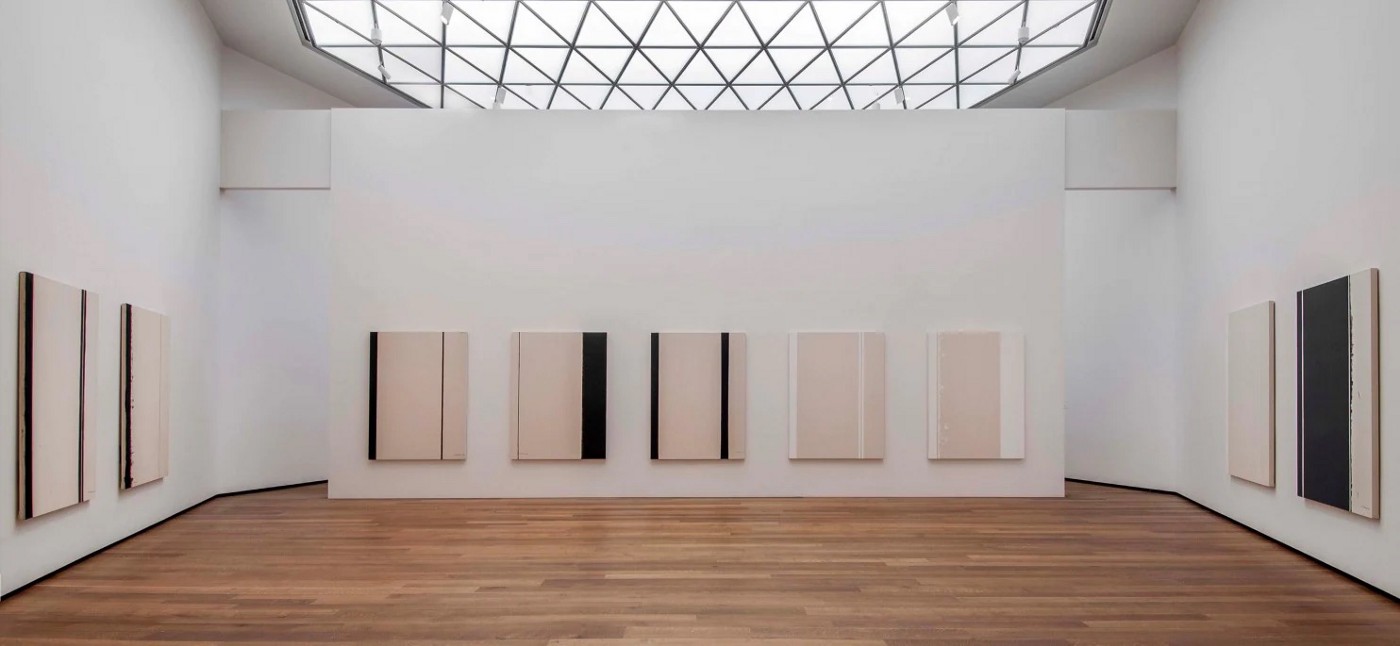Not really abstract
This article originally appeared on Medium.
“Here are we, one magical moment
Such is the stuff, from where dreams are woven
Bending sound, dredging the ocean
Lost in my circle
Here am I, flashing no color
Tall in this room overlooking the ocean
Here are we, one magical movement
From Kether to Malkuth
There are, you drive like a demon
From station to station”‘Station to Station’
David Bowie, 1976
Bowie’s ten minute title track of his album of 1976 opens with a synthesized train bumping along in homage to Kraftwerk’s ‘Autobahn’ and the ‘Krautrock’ of the early 1970s. But the ‘stations’ are really nothing to do with trains…
I’ve always considered myself to be predominantly an abstract artist. I used to be a figurative painter – landscape and so on. Over a period my work became more and more ‘abstract’ – usually via abstracted painterly marks and an expressive response to an input (landscape usually). The marks and gestures I made were somewhere between painting, drawing, writing and calligraphy.

On the face of it – my recent work presents as ‘abstract’. The 10x10 Xs are a series of 100 digitally native NFTs made in 2021 (10x10 Xs on Opensea). I’ve been fine with the description and happy to be associated with other abstract artists – even maintaining a Twitter list on Abstract NFT 2D ‘painters’. (The Abstract Group)

Just recently I’ve come to realise my work isn’t really abstract. If abstract painting is like music, then my abstract painting is more like the lyrics with the music. Let’s call it out for what it is – it’s symbolism.
Symbols, language, writing and painting and their (mis)understanding are at the heart of what I do. It’s not about a purely emotional response (although i’m happy with that if it’s the case); but one that assumes some intellectual dialogue.
Earlier in my career I’d mostly stopped painting and became a designer and typographer — making logos, publications and later on websites etc. My day-to-day life was working with symbols, typography, conceptual references, communicating, branding and imagery, and I happily worked and made a decent-ish living with these symbols. The formal aspect of the design process seems to satisfy the analytical side of my brain.
Origins of the ‘Stations’ series
We (twitter: @samflavin and I) recently moved back to our hometown in the UK and revisited a local church which was known for, in the past, supporting the arts. A forward looking curate / curator in the 1940s/50s had secured for the town, a Henry Moore sculpture and a Graham Sutherland painting of the crucifixion. I hadn’t seen this huge painting since schooldays (my art teacher, the incredibly talented and influential painter Terry Raybould, arranged a trip for us sixth formers). The chance to see both works again was presented when the church was opened as part of a ‘heritage open day’ giving public access to prominent buildings.

Whilst walking around the church I noticed a series of roman numerals (my typography head was clearly on) carved and placed around the walls of the church. It was of course the ‘Stations of the Cross’ – 14 points on Christ’s journey from condemnation to crucifixion.
‘The Stations of the Cross’ is a subject that intersects art history, tradition, meditation, painting, ritual, representation and abstraction. Historically they depicted points on the Via Dolorosa. Representations could be a sculpture, a painting or simply numbers on a wall or stopping points along a road. The actual imagery isn’t usually the priority – any image presented was rarely made by the most famous artists.Whether sculptures or paintings they were usually made by invisible artisan craftsman – it is more about the annual ritual. Sometimes the stations are just reduced down to a series of numbers – Symbols – to invoke the ritual of thought and incantation.
The abstract expressionist painter Barnett Newman produced a series from 1958 – 1966: “The Stations of the Cross: Lema Sabachtani”. Completely abstract and taking on a whole layer of meaning simply through titling, placement and timing.

According to the critic Harold Rosenberg there is ‘nothing religious’ about Barnett Newman’s series of fourteen roughly human-scale, black and white paintings. Newman was not religious (neither am I), but his series is more than just a visual reminder of a biblical story demanding ritualistic action from the participants: recitation of incantations, reflection, and walking from one to the next. Newman’s series is more about the wider human condition, the journey through life, its ups and downs, and eventual, inevitable death. Station to Station.
A cross symbol has long been a feature of my work – it has multiple readings, from an illiterate signature, a kiss, a vote and so on. I was drawn to this idea of a series of connected works or places with stopping points along the way. In October, we relocated to France for the Winter and onto another new stage of our lives. Doing something new, taking time out, just ‘being’.
A station is something fixed – a position in which something is assigned to stand or remain. A painting in a gallery is fixed as we wander through it – we might walk past or pause in front of it, consider the thoughts we bring or simply just look and be open to the image and ideas that are generated. These are the ideas that inform this new series.
The ‘stations’ in the traditional sense are simply a starting point for a painting — in the same way I would react to a particular landscape on my journey from figuration to abstraction. The series is not an attempt to depict, literally, but to develop into a container for thought – there may of course be references to a wider art history, tradition, ritual, language, culture or expression.

The journey is extended and continues in the making of the individual works; their creation and presence on the blockchain. The station, the contract, the Tx or point-in-time being marked immutably. The interaction (or not!) of the buyer, the anticipation of the next in the series being completed and released. There will be 14 in the series and the formats are all the same — real 4k, designed to work on a digital display. The later ones are still being made while the first one is being minted.
Back to the Bowie lyrics at the start of this article — the album is not a favourite of mine by any means, but the final track ‘Wild is the Wind’ recorded in homage to the Nina Simone version – is. The ‘Stations’ mentioned are little or nothing to do with trains other than a stylistic acknowledgement of Kraftwerk’s ‘Autobahn’. They are of course the ‘Stations of the Cross’ – a metaphor for the journey through life. ‘Kether to Makuth’ refers to the top and bottom of the Kabbalah or ‘Tree of Life’. Full of symbolism, the album came at a time when he’d just finished filming Nicolas Roeg’s ‘The Man Who Fell to Earth’. He was travelling between Europe and LA, in the midst of his ‘Thin White Duke’ alter ego. Bowie later said he didn’t know how he survived the era; clearly unhappy, painfully emaciated and reading a lot of Alestair Crowley. It gives clues to his obsessions with the occult and perhaps the state of his cocaine-addled mind.
‘Stations’ is a series of 4k real (16:9 2304x4096px) digitally native ‘not abstract’ paintings currently in production and released as NFTs on Known Origin. (https://knownorigin.io/collections/altjames/stations)
